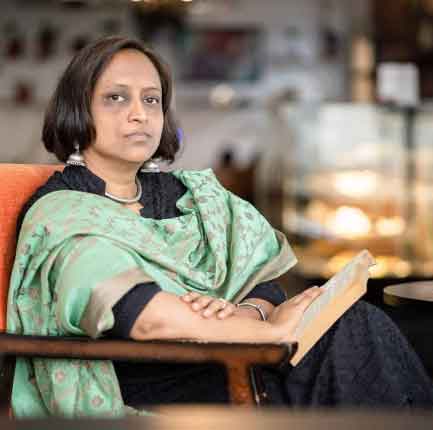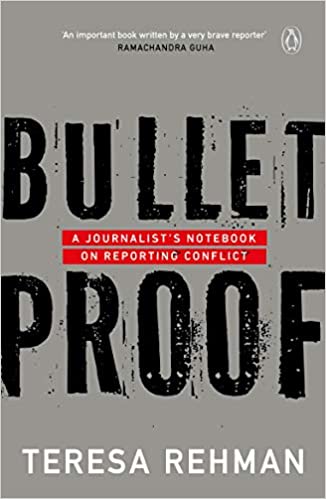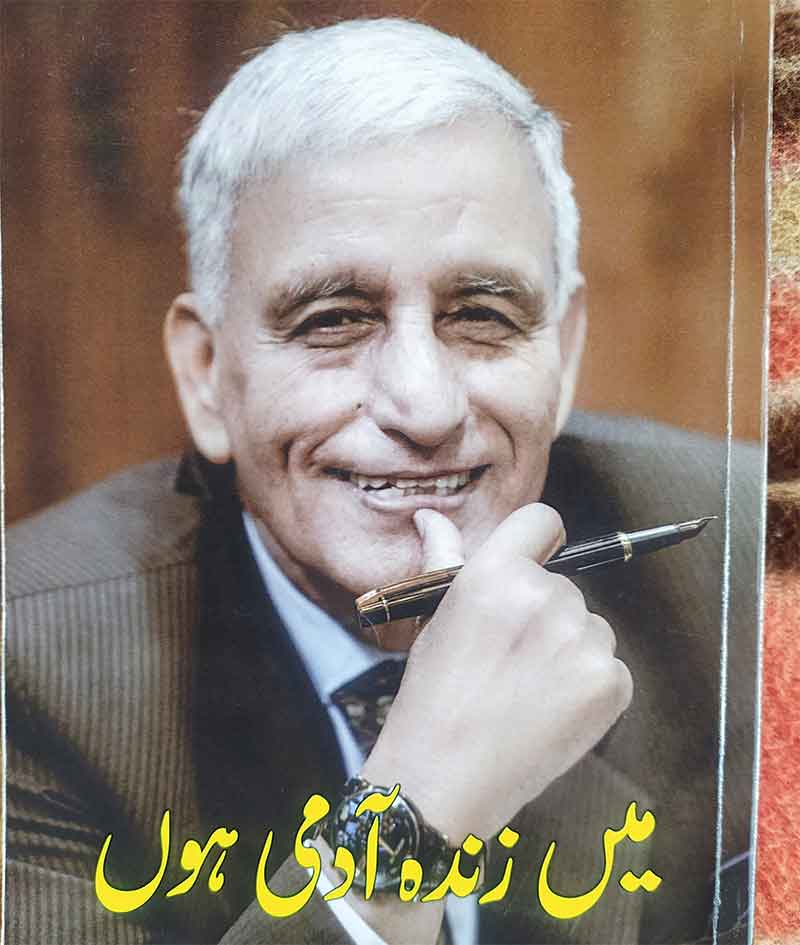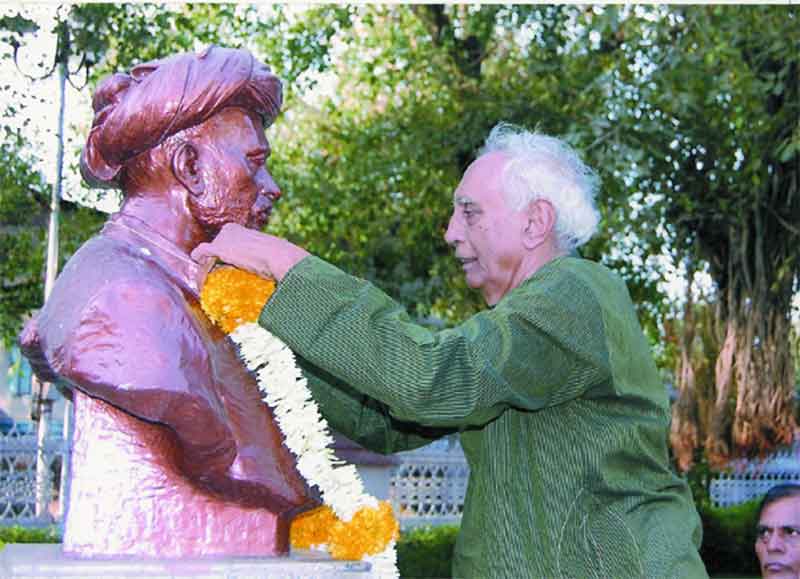
Teresa Rehman is a journalist with a difference. She is woman who feels and conquers with her pen. She does not hanker for anything more than being the spokesperson for voices in the remote areas of North-eastern India. In that spirit, she started her own magazine: The Thumb Print, and also wrote a couple of books which have found their way to even the Strand Bookstore in New York.
Rehman, an award-winning journalist based in North-east India, is known for her resolute grit and matter-of-fact approach to stories. She has worked for years toward bringing the different facets of the region, its diversity and distinct ethos into mainstream media. Rehman’s work in journalism spanned through India Today, Telegraph and Tehelka before she decided to put in all her resources into launching The Thumb Print e-magazine that she edits currently. She has managed to bring in the gender perspective to her stories.
Rehman is known for her unassuming persistence on getting the details, and sensitivity. She was featured in the Power List of Femina magazine in 2012 and has written three books. The Mothers of Manipur (Zubaan Books) and Bulletproof (Penguin Random House India) are among them. Borderless in this exclusive, unravels, Rehman’s journey as a journalist.
You said in one of your Thumb Print conversations, you are a journalist and not a writer. What do you see as the difference between being a journalist and being a writer? You have written a number of books. Does that not make you a writer?
I would always prefer to call myself a journalist and a chronicler who is trying to tell the stories of the men, women and children of one of the most underreported regions of the world, i.e. Northeast India. And the books I had written are journalistic narratives without any frills, of my journey as a reporter into the nook and crannies of the region and the stories behind the stories. I am a reporter who loves her job.
How many newspapers/ magazines have you worked for?
I started off as a cub reporter for the local dailies. And after completing my studies in journalism from the Indian Institute of Mass Communication, New Delhi, I started off as a trainee journalist at the editorial desk of India Today magazine in the capital city. After that, I relocated to Guwahati and started working as a Correspondent with The Telegraph newspaper and later reported for the entire region for Tehelka magazine. Thereafter, my life took a different turn and I became a media entrepreneur by launching the webzine, The Thumb Print in 2012. I have also written about specialised issues like media analysis for The Hoot, climate change for Alertnet Reuters, the environment for The Third Pole and gender for the Women’s Feature Service.
How long have you been a journalist? Does journalism clash with family life more than other professions?
I have been a journalist for almost two decades now. I feel, once a woman steps out of the house for work or any other activity, there are changes in her family life — for some these changes are subtle and for some these changes may be earth shattering. And if a woman finds support at home, she can break any kind of glass ceiling at her workplace. A woman is exploited the most at home. And any kind of changes in her professional life begins and ends at home. I have been quite fortunate to have had a congenial atmosphere to be able to pursue my unconventional career as a journalist. I am a first-generation journalist in my family and though I had erratic working hours, I always managed to create a support system at home. However, not all women are fortunate like I am.
You have been to many places as a journalist that a common person would not visit. Are they all centred in the North- East? Is there a reason you work from this area. Tell us a bit about your experiences in such areas.

A senior journalist had once told me “your location is your disadvantage”. On the contrary, I feel that northeast India is a paradise for journalists. There are so many untold stories waiting to be told. I feel blessed that the region is my home and I chose to work from this difficult space — a region that has witnessed several decades of violent insurgency coupled with a hostile geographical terrain. My experience has been novel, vivid and interesting compared to the rat race in the journalistic circles in the metropolitan cities and the glitz and glamour of television channels. I choose to tread on the untrodden path, in the midst of virgin nature and unwritten stories. I have written about my experiences in reporting conflict in my book Bulletproof (Penguin India). I am glad that internet has opened up immense possibilities and I can work from any place in the world and get my story across to the world.
You are an award-winning journalist. Can you tell us the work that led to these awards? Did you do the work with the intent of getting the award or was that incidental?
It feels good to be recognised for your work. But I never went hankering for awards. I guess your good work speaks for itself. I had bagged some of the most prestigious awards for journalism in India that include the WASH Media Awards 2009-2010, the Ramnath Goenka Excellence in Journalism Award for two consecutive years (2008-09 and 2009-10) for the category ‘Reporting on J & K and the Northeast (Print)’, the Laadli Media Award for Gender Sensitivity 2011, Sanskriti Award 2009 for Excellence in Journalism and the Seventh Sarojini Naidu Prize 2007 for Best Reporting on Panchayati Raj by The Hunger Project. In fact, the WASH Media Award which is given for writing on water, sanitation and hygiene and is sponsored by the Water Supply and Sanitation Collaborative Council (WSSCC) and the Stockholm International Water Institute (SIWI) was given for a story I had done based on the life of my domestic help and her associates. This goes to show that in order to bag a good story, you need to keep your ears and eyes open.
Why did you feel it was important to record your experiences in books? Was writing a book different from writing for a newspaper or magazine?
A book definitely has a longer shelf life and its reach is tremendous. I was surprised to see my book on sale at the Strand Bookstore in New York. A book remains and becomes an important document for posterity as it can also be stored in the libraries of the world. A book has a life of its own compared to newspaper clippings and write-ups. It can travel far and wide.
Tell us a bit about your work in Thumb Print. What started you on Thumb Print?
The Thumb Print was a very angry reaction. When I had to struggle to find space for my stories in the so-called ‘National’ media, I decided to create my own space. This was when I had discovered the might of the internet. The Thumb Print is more like scaffold trying to reach out to the world and bring the world to our doorsteps. We proudly call ourselves an ‘international magazine with a north-eastern soul’.
You do these online interviews with writers, currently on “Why women write?” Why would you choose this topic? Did you face a lot of discrimination as a woman in journalism?
When I started doing hardcore conflict reporting, I realised that I was stepping into an old boy’s club. I was treading into masculine space and I had to manoeuvre my way all by myself. I got no support from my male colleagues. Women, all over the world, face different layers of discrimination when they step out to do something unconventional. That is why I felt that it was important to address this question of ‘Why and how women write’.
Are you planning a new book? What are your future plans?
Yes, I am working on another book on an important aspect of contemporary northeast India. And of course, I intend to dabble with different aspects of media which is trying to keep pace with the fast evolving technology.
Any message for upcoming writers/ journalists?
Yes, journalists should not forget the basic values of good old shoe-leather journalism. A value of a well-told story can never change — though the medium or external packaging might change. In trying to keep pace with technology, we should not forget the values of telling the truth that should be the primary concern of a journalist.
This interview was conducted online by Mitali Chakravarty.
Originally published in Borderless Journal
SIGN UP FOR COUNTERCURRENTS DAILY NEWSLETTER
















































